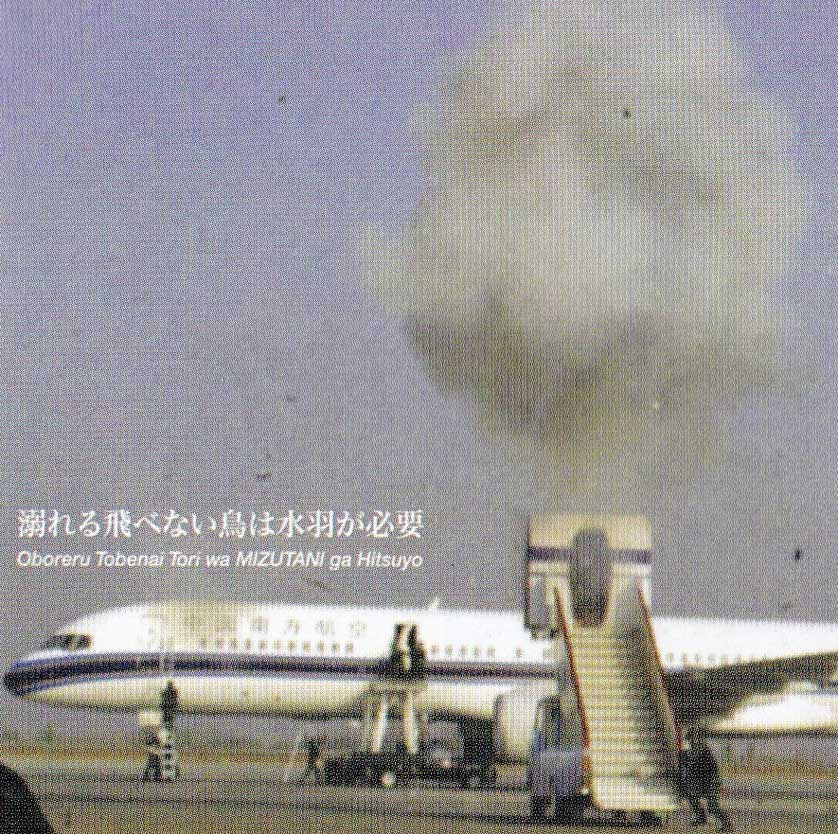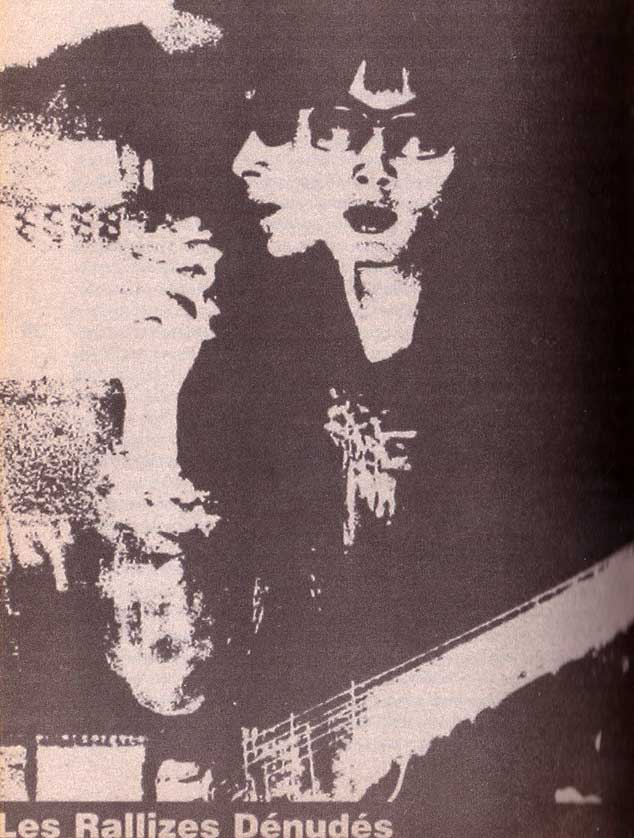Les Rallizes Denudes & The Yodo-go Hijack – Rock & Revolution
It was supposed to be the ultimate revolutionary statement by the group of nine young Japanese leftist radicals: hijacking an airplane and re-directing it straight to Cuba. Right out of Tokyo Haneda Airport.
In the previous years, American hijackers of all persuasions, from leftist or black revolutionaries to people with various personal grudges had done the same. Fidel Castro, Cuba’s leader, had even ordered an extension of the runway of Havana’s José Martí Airport to accommodate those ever-larger jets. In January 1969 alone, 8 hijacked planes from the U.S. landed on José Martí.

Japan Airlines Flight 351
Communist Cuba generally treated the arriving hijackers as heroes and Cuba was the country of the dreams of the young Japanese radicals. They all belonged to a group called the Japanese Red Army Faction, already known for violent street battles and a string of small-scale bombings.
Carrying samurai swords and a bomb, they took their seats on Japan Airlines Flight 351 headed for Fukuoka in the southwest of Japan on the morning of March 31st, 1970.
Once the plane carrying 129 passengers had reached travel altitude, the hijackers stepped forward and demanded an immediate turn for the Caribbean. To their dismay, they were informed that the fuel would last only until the original destination. The plane itself was not constructed to cross the Pacific. Flying to Cuba was absolutely out of the question.
The hijackers agreed to a refueling stop in Fukuoka. After what must have been intense discussions among the nine young men, they agreed on Pyongyang, North Korea as their new destination. North Korea was within reach and taking the plane there might accomplish a revolutionary statement just as well.
Pyongyang
For three days, the plane sat in Fukuoka until it received permission to depart for Pyongyang. The hijackers released 23 women and children and took on Japanese transport minister Shinjuru Yamamura as a replacement before they departed.
Sure enough, the plane crossed the Tsushima Strait and flew over the Korean mountain ranges. When it touched down at what the pilot announced as Pyongyang Airport, the hijackers were suspicious. The tarmac was empty, no welcome committee showed up at all.
When one of them turned on an FM radio, contemporary American pop music played. Looking out the window, barely concealed Western advertising could be seen. This was not Pyongyang! The hijackers quickly realized they had been duped.
In fact, their plane had landed at Seoul’s Kimpo Airport, unconvincingly dressed up as Pyongyang Airport. After another stand-of, the hijackers released all passengers and continued on their journey, eventually reaching Pyongyang where they were indeed instantly feted as revolutionary heroes.
They became highly touted guests of the state, had their own housing units allocated to them – and were never allowed to leave again. Most of the hijackers surviving today are still in Pyongyang.

Les Rallizes Denudés
Soon, background details of those involved in the hijacking made the news. All hijackers had been students at either Doshisha or Kyoto University, the two most high-ranking schools in Kyoto. Back at their schools, they were hardly known, though with one exception: Moriaki Wakabayashi.
Wakabashi had sort of made a name for himself by having been the bass player for Doshisha University’s most unruly and most noisy psychedelic rock band – Les Rallizes Denudés.
The band was the brainchild of Doshisha French literature and sociology major Takashi Mizutani. Mizutani had soaked up French existentialism not only at the university by also at the French-style beat cafés that were popular in Kyoto at the time.
Smoking filterless Gauloises and talking about the newest books by Sartre and Guy Debord while listening to Ornette Coleman and Django Reinhardt, the young hipsters hatched revolutionary ideas in politics and in the arts. At the same time, Greenwich Village folk music from New York made its inroads into the Japanese student scene where it was welcomed as a “back-to-basics” alternative to the thoroughly commercialized Beatles-inspired Group Sound music dominating the Japanese airwaves.
Doshisha
In November 1967, Mizutani started his own band at Doshisha University, with himself as singer, Moriaki Wakabayashi on bass, Takeshi Nakamura on rhythm guitar and Takashi Kato on drums.
Given Mizutani’s background, only a French name would do for the band. Les Rallizes Denudés were born. In fact, it was a fake-French name as there are no “rallizes” in the French language. Soon a “Japanese version” of the name was also adopted, Hadaka no Rallizes, translating to the “Naked Rallizes”. It didn’t make anyone any wiser.
At first, they enlisted a radical theater group called Gendai Gekijo (founded in 1962) to somewhat re-create the experience of the Exploding Plastic Inevitables (aka The Velvet Underground) from New York which Mizutani had just discovered. The Gekijo folks were to be on-stage dancers in the style of Mary Woronov and Gerard Malanga and it was also the duty of the theater group to put on an elaborate light show.
The signature song of Les Rallizes at that time was the Smoking Cigarette Blues… (unfortunately a poor recording).
Mizutani’s insistence on extreme loudness however soon drove the theater folks away. The band itself would have soon disappeared into the abyss of history if it hadn’t been for the headlines Wakabayashi made with his participation in the Yodo-go hijack. Suddenly, the obscure noisy Kyoto student band was in the national news.
After the Hijacking
Wakabayashi’s role in the hijacking led to some investigations of the band by the authorities. Allegedly, Mizutani had been asked to participate in the hijack as well but he was intelligent enough to decline.
With Doronco (“the Mud-Covered”), the former sound technician of Tokyo’s Club Oz as replacement bassist, the band charged ahead on a bigger scale – but strictly on Mizutani’s obscurantist terms: live shows only, no studio recordings at all. No official record releases.
Bootlegs recorded at the live shows were the natural outcome of that policy and many of the original pressings from the 1970s are highly sought-after collector’s items today.
The subject matter of Les Rallizes Les Rallizes Denudes’ songs grew darker and darker. Listen here for example to their song Heavier Then a Death in the Family:
Fan Base
Drawn-out droning feed-backs over an amazingly simple basic melody while the drums hit an unwaveringly monotonous beat.
The fan base remained small. When Les Rallizes Denudes were finally invited to a major Open Air rock festival in the mountains of Ishikawa Prefecture in 1976, a typhoon forced them to play in the morning right before the whole festival had to be canceled.
Their rendition of Night of the Assassins at that festival however remains a fine example of Les Rallizes coolness in the face of an impending thunderstorm of epic dimensions:
Concerts of the Les Rallizes became subsequently rarer and rarer though they continued up until the mid-1990s.
One of their last appearances was at the Seibu Kodo in Kyoto, the legendary concert hall right next to the main campus of Kyoto University, operated by radical squatters since the student revolution days in the early 1970s.
Fittingly, they played a song named “The Last One”.
Les Rallizes bootleg records continue to get released. YouTube offers lots of original concert material as well. The number of Les Rallizes fans seems to grow although the band itself is no longer active.
Noise-oriented rock bands like Zeni Geva and Majutsu no Niwa picked up on the heritage of Les Rallizes. Japanese Noise owes a lot to Les Rallizes Denudes.
Doronco, Wakabayashi’s replacement bassist at the Les Rallizes, continues the wild sound with his new band Los Doroncos. That’s Doronco teamed up with young musicians and they can be heard frequently at the clubs in Tokyo’s Koenji today.
Back in Pyongyang
The ranks of the Yodo-go hijackers have thinned out. Some were arrested while on secret missions abroad, and some died. Moriaki Wakabayashi and a few fellow hijackers however are still in Pyongyang to this day.
Not much is known about Wakabayashi’s daily routines but it’s certainly safe to say that the North Koreans had no use for his psychedelic bass play and that they silenced his musical output for good.
by Johannes Schonherr, April 2014
Further reading
Julian Cope: Japrocksampler: How the Post-War Japanese Blew their Minds on Rock’n’Roll
Bloomsbury: London, Berlin, New York, 2007
The Yodogō Group’s “Revolution Village” Today: Where the surviving Sekigun-ha Yodogō hijackers are living in North Korea (Throw Out Your Books; William Andrews)
Japan Noise on Film: Go Shibata
Luxury Hotels in Tokyo – Booking.com